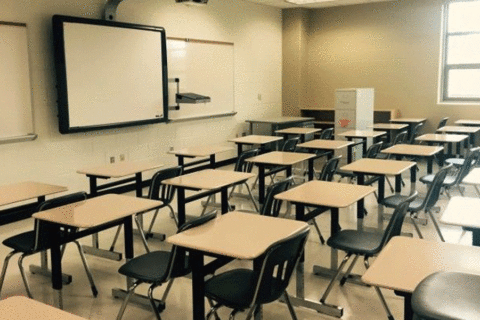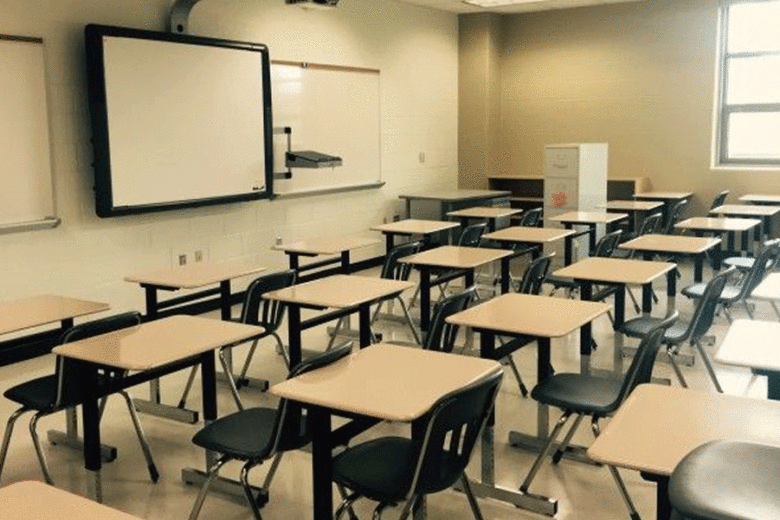This article was republished with permission from WTOP’s news partners at Maryland Matters. Sign up for Maryland Matters’ free email subscription today.

This content was republished with permission from WTOP’s news partners at Maryland Matters. Sign up for Maryland Matters’ free email subscription today.
When he was a teacher in West Baltimore, many of state Sen. Bill Ferguson’s students had difficulty coming to school ready to learn — or even getting to school at all.
“There was a lot of trauma, issues of violence and neglect in the community that kids brought with them when they came in — inequitable access to resources, transportation issues,” said Ferguson, D-Baltimore City, now vice chair of the Senate Budget and Taxation Committee.
That’s why Ferguson is excited that Maryland’s biggest school reform package in nearly two decades doesn’t just consider funding or propose one policy solution. Instead, the recommendations by the Commission on Innovation and Excellence in Education, also known as the Kirwan Commission, would expand prekindergarten, boost teachers’ salaries and aim to make teaching a high-status profession, create college and career-ready pathways and provide extra services in schools with high concentrations of poverty.
Many of the recommendations reflect policies teachers have been advocating for years, said Del. Eric Ebersole, D-Baltimore, Howard County, who taught high school math for 35 years. Ebersole, a member of the House Ways and Means Committee, said his teacher friends are excited about the package’s big-picture view.
“What piqued the interest of teachers was that it’s about taking interest in actual education policy, not just funding,” he said.
Teachers have been an integral part of the process, legislators and the state teachers union say. Two of commission’s 25 members are teachers. Faculty also dominated the commission’s “listening sessions” and testified before it, while about two-thirds of its members are educators, including administrators, school board members and higher education professionals. But teachers’ perspectives are also represented by the nearly three dozen legislators who are or have been educators, many of whom hold key positions in the process.
While lawyers dominate the Maryland General Assembly, 10 delegates and one senator count themselves as educators, according to the membership profile compiled by the Department of Legislative Services; the Maryland State Education Association counts 35 legislators who are or have been educators. The chairs of the four committees that are considering the Kirwan policy recommendations and will decide how to pay for them have strong backgrounds in education as teachers, school board members and school administrators.
They are Senate Budget and Taxation Chair Nancy J. King, D-Montgomery, a former PTA leader and school board president; Senate Education, Health and Environmental Affairs Chair Paul G. Pinsky, D-Prince George’s, a former teacher and teachers union administrator and an education policy expert; House Appropriations Chair Maggie L. McIntosh, D-Baltimore City, a former Baltimore City teacher; and House Ways and Means Chair Anne R. Kaiser, D-Montgomery, an adjunct professor.
“The people at the table who are guiding the conversation really do have classroom teaching experience, and it makes a difference,” said Del. Jared Solomon, D-Montgomery, who taught in Baltimore City and worked for the D.C. Public Schools before working on federal education policy. They remember students who couldn’t learn because they needed mental health and wellness services, or who couldn’t stay after school for help because it was unsafe to walk home after dark.
The recommendation for a “community schools model” would address the needs of students living in poverty, providing “wraparound services” such as wellness centers and social workers, some educator/legislators say. Expanding pre-K for 3- and 4-year-olds, another commission recommendation, would also ensure low-income students arrive better prepared for kindergarten.
“Data show early intervention brings them up to the skills kids from more affluent families arrive with when starting kindergarten,” said Del. Ken Kerr, D-Frederick, a Frederick Community College professor in his first term, who ran as “a champion for public education.”
Most important is the way the parts work together as a 10-year vision, said Pinsky, a member of the Kirwan Commission who has spent 40 years in education as a teacher, teacher representative and policy expert.
“You can’t have good instruction without attracting and retaining teachers,” he said.
But students also need pre-K so they don’t fall behind before they’ve even started school, and some need tutoring or other special services provided for in the recommendations. If they’re acting out, they need counseling and other wraparound services, so they don’t wind up in the school-to-prison pipeline. “It’s a package,” Pinsky said.
Kirwan Commission continuing
The work of the Kirwan Commission will continue over the next year to rewrite state funding formulas and identify revenue sources for a public education expansion that is expected to cost an additional $3.8 billion a year after a 10-year phase-in. Details about implementation and accountability, including the makeup of a new oversight board independent of the Maryland State Board of Education and superintendent, also must be determined.
Legislators mention a host of possible sources of funding, including legalization of sports betting or medical marijuana, taxing online businesses or adding sales taxes on services. Gov. Lawrence J. Hogan Jr., a Republican, has proposed using some of the casino revenues that voters recently put in a “lockbox” for education to fund school construction projects, not strictly for operations.
Hogan has said he agrees that Maryland teachers and students deserve well-funded schools, but has expressed concern about the cost of the Kirwan recommendations, charging legislators with “pandering to special interest groups.” The commission recommendations do not include some Hogan priorities such as expanding charter schools.
Legislators with teaching experience say implementation will be key.
“When you have an idea what it means to have to carry out policies in the classroom, it makes you think about implementation,” said Solomon, a member of the House Appropriations education subcommittee. “That’s where a lot of laws go bad: it looks good on paper, but there’s no thought” to how it will play out.
Solomon has been traveling the state with a bipartisan group of state and local legislators, all with a background in education, visiting the most promising schools in their districts to look for programs that successfully use strategies the Kirwan Commission hopes to expand. For example, Wolfe Street Academy in Baltimore City increased attendance after adding a bilingual “school family council” and had reduced suspensions after expanding mental health and after-school programs, he said.
Teachers have had a strong voice in crafting the plan, but their role is not finished, legislators say. They will have to become advocates for more funding.
“Teachers work 10 to 11 hours per day,” Pinsky said. “Some will say, ‘I didn’t go into teaching to go door-to-door.’ But they’ve got to be proactive, they’ve got to say, ‘We’re going to transform schools.’”
Cheryl Bost, president of the Maryland State Education Association, said teachers have become more active through the Kirwan process, and in the recent March for Our Schools, which drew more than 8,500 educators to Annapolis to demand more funding for schools.
“It’s not enough to be a really great teacher anymore,” she said. “They have to advocate for their students in the halls of Congress, at the boards of education and in Annapolis.”








